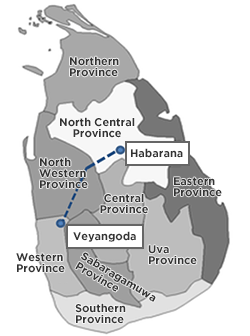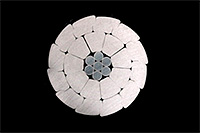Press Release
JPS Wins Contract for Habarana-Veyangoda Transmission Line in Sri Lanka
November 30, 2016
Sumitomo Electric Industries, Ltd.
*This press release was originally published in Japanese on November 9, 2016.
A three company consortium formed by J-Power Systems Corp. (JPS), a wholly owned subsidiary of Sumitomo Electric Industries, Ltd., Mitsubishi Corporation, and Ceylex Engineering (Pvt.) Ltd. of Sri Lanka, was appointed to install overhead power lines between Habarana and Veyangoda in Sri Lanka planned under a Japanese ODA loan secured by the Ceylon Electricity Board. This 6 billion-yen project will install two 220-kV circuits over 150 km between the two cities by October 2019. JPS is responsible for manufacturing the conductors.

Sri Lanka
(Dotted line shows transmission route)
To advance Sri Lanka's economic development, enhancement and efficiency of transmission line has been desired. Thus, a conductor with large capacity and minimum transmission loss was a requirement for the project. In recognition of JPS's long-proven technology utilized in its low-loss conductor,* the company will deliver the conductor for the first time in Sri Lanka for the entire length of the important network between Habarana in the mid-north region of the country and Veyangoda near the capital.
Together with JPS, Sumitomo Electric will contribute to supplying stable electricity in Sri Lanka and its economic development through this project. We will also continue to expand our electricity power transmission business in Sri Lanka and other Asian countries.

Cross-sectional view of
the low-loss high-capacity cable
*Low-loss high-capacity power cable
A conductor designed with the maximum aluminum area. Compared with conventional conductors, this JPS conductor should reduce transmission loss by approximately 20 to 25%. This more efficient transmission will also help reduce CO2 emissions from power generation.


